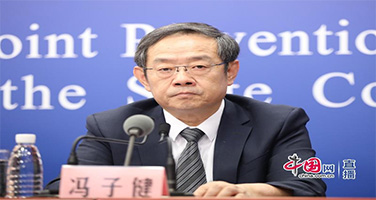ВЛИЯНИЕ РАБОЧЕЙ СРЕДЫ И КАЧЕСТВА ПРЕПОДАВАНИЯ НА УСПЕВАЕМОСТЬ УЧАЩИХСЯ СРЕДНЕЙ ШКОЛЫ: НА ПРИМЕРЕ КАЗ
ВЛИЯНИЕ РАБОЧЕЙ СРЕДЫ И КАЧЕСТВА ПРЕПОДАВАНИЯ НА УСПЕВАЕМОСТЬ УЧАЩИХСЯ СРЕДНЕЙ ШКОЛЫ: НА ПРИМЕРЕ КАЗАХСТАНА И КИТАЯ
Булатбаева А.А.
Казахский национальный университет имени Аль-Фараби,
д.п.н., профессор кафедры педагогики и образовательного менеджмента
Ван Чуньлин
Казахский Кандидат наук, Казахский национальный университет
Факультет педагогики и управления образованием
Ван Юмэн
Казахский национальный университет имени Аль-Фараби, магистрант
кафедры педагогики и образовательного менеджмента
Тань Чэньхонг
Казахский национальный университет имени Аль-Фараби, магистрант
кафедры педагогики и образовательного менеджмента
Абстракт: Данное исследование исследует взаимодействие между рабочей средой учителей, качеством обучения и академическими результатами средних школьников посредством сравнительного анализа Казахстана и Китая. Сравнивая образовательные среды в двух странах, исследование раскрывает внутренние связи между условиями труда учителей, качеством обучения и академическими достижениями студентов. Установлено, что благоприятная рабочая среда и высокое качество обучения значительно повышают академические результаты студентов. Результаты данного исследования имеют важное значение для оптимизации распределения образовательных ресурсов, повышения качества обучения и содействия всестороннему развитию студентов.
Ключевые слова: Рабочая среда; Качество обучения; Академические результаты; Сравнительное образование.
THE INFLUENCE OF WORKING ENVIRONMENT AND TEACHING QUALITY ON MIDDLE SCHOOL STUDENTS' ACADEMIC PERFORMANCE: A CASE STUDY OF KAZAKHSTAN AND CHINA
Bulatbayeva A.A.
Al-Farabi Kazakh National University,
professor of the Department of Pedagogy and Educational Management
Wang Chunling
AI-Farabi Kazakh National University, PhD student
Department of Pedagogy and Educational Management
Wang Yumeng
AI-Farabi Kazakh National University, Master student
Department of Pedagogy and Educational Management
Tan Chenhong
AI-Farabi Kazakh National University, Master student
Department of Pedagogy and Educational Management
Abstract:This study examines the interplay between teachers' working environment, teaching quality, and middle school students' academic performance through a comparative analysis of Kazakhstan and China. By comparing the educational environments in the two countries, the study reveals the intrinsic links between teachers' working conditions, teaching quality, and students' academic achievements. It is found that a favorable working environment and high-quality teaching significantly enhance students' academic performance. The findings of this study have important implications for optimizing the allocation of educational resources, enhancing teaching quality, and promoting the comprehensive development of students.
Keywords: Working Environment; Teaching Quality; Academic Performance; Comparative Education
Introduction
Educational quality serves as a crucial indicator for assessing a country's educational level, and middle school students' academic performance directly reflects this quality. Among the multifaceted factors influencing academic performance, teachers' working environment and teaching quality occupy a central position. Kazakhstan and China, as two major countries in Asia, exhibit notable differences in their educational systems, cultural backgrounds, and economic development levels, yet both face the common challenge of improving educational quality. This study explores the impact of working environment and teaching quality on middle school students' academic performance in Kazakhstan and China, aiming to provide valuable references for educational reforms in both countries.
I. The Influence of Teachers' Working Environment on Teaching Quality
The working environment of teachers encompasses a complex, multidimensional concept that includes not only the physical environment, such as classroom layout and teaching facilities, but also the psychological and social environment, encompassing factors like teacher collaboration, school culture, administrative support, career development opportunities, and incentive mechanisms.
1. Analysis of Teachers' Working Environment in Kazakhstan
Despite initial successes in investing educational resources, Kazakhstan still faces serious challenges regarding the working conditions of teachers. In most cases, this applies to remote rural and small schools, where there is an obsolescence of equipment and a shortage of laboratory equipment, which limits the variety and depth of teaching methods [1]. While urban school teachers have great potential to seek methodological assistance from pedagogical universities and centers, rural school teachers often work in isolation, which hinders the exchange of pedagogical experience and mutual support. The positive thing about the working environment is that Kazakhstan has adopted the law "On the status of a teacher", which prescribes social guarantees and career paths, as well as mechanisms to stimulate teaching enthusiasm for innovation [2].
2.Analysis of Teachers' Working Environment in China
The Chinese education system is characterized by modern classrooms, well-organized classrooms with good lighting and ventilation, which create a favorable learning environment. Psychologically and socially, Chinese schools emphasize teacher collaboration and communication, fostering a positive campus culture. Administrative support is robust, offering abundant career development opportunities and incentive mechanisms that ignite teachers' teaching enthusiasm and innovative spirit. However, it should be noted that imbalances persist in teachers' working environments across different regions in China, particularly in rural and remote areas where resources and support are relatively scarce.
3.The Mechanism of Working Environment's Impact on Teaching Quality
The working environment serves as an invisible driving force for enhancing teaching quality. A positive and supportive working environment ignites teachers' intrinsic motivation, fostering a love for teaching and a willingness to explore new methodologies and technologies, thereby continually elevating teaching quality. Conversely, a negative or oppressive environment saps teachers' enthusiasm, leading to conservative teaching approaches devoid of innovation, which in turn impacts students' learning outcomes and growth. Furthermore, the cultural atmosphere and incentive mechanisms within the working environment indirectly influence teaching quality by shaping teachers' instructional philosophies and behavioral patterns.
II. The Influence of Teaching Quality on Middle School Students' Academic Performance
Teaching quality, a key indicator of teachers' instructional proficiency, encompasses the scientific rigor of teaching content, the effectiveness of teaching methods, the standardization of the teaching process, and the fairness of teaching evaluation.
1. Analysis of Teaching Quality in Kazakhstan
Recently, the quality of teaching in Kazakhstan has improved in recent years. Much attention is paid to the design of interesting content aimed at the development of interdisciplinary knowledge, the use of AI in the educational process, there are innovative schools (BIL, NIS, RFMSH). Kazakhstan has introduced a comprehensive assessment system for students' academic achievements. However, some schools retain monolithic and traditional approaches to learning, which in turn significantly limits the cognitive development of students.
2. Analysis of Teaching Quality in China
China has witnessed significant advancements in teaching quality in recent years. Teachers prioritize updating content and innovating methods, employing diverse instructional strategies to stimulate students' interest and motivation. The standardization of the teaching process has improved, with teachers adhering strictly to instructional norms to ensure consistent quality. China boasts a relatively complete evaluation system that comprehensively assesses students' learning outcomes and teachers' instructional effectiveness through examinations, assignments, classroom performance, and other means.
Conclusion
Teaching quality is a crucial factor influencing middle school students' academic performance. High-quality instruction ignites students' interest and enthusiasm for learning, enhancing their learning capabilities and comprehensive abilities[3,c.65]. Conversely, low-quality instruction may engender academic apathy, diminishing students' learning efficiency and academic performance. Furthermore, teaching quality influences students' learning attitudes and values, potentially shaping their future development and life trajectories.
Thus, a comparative analysis of the academic performance of secondary school students in Kazakhstan and China showed differences in the following areas. First, there are differences in the distribution of educational resources. China invests significantly more in education, providing schools with greater access to information technology and highly qualified teachers[4, p.38]. Conversely, Kazakhstan's relatively scarce educational resources in rural areas hinder the improvement of teaching quality. Secondly, there are differences in philosophy and teaching methods. China focuses on developing students' abilities using a variety of learning strategies. Kazakhstan pays great attention to the transfer of knowledge and examination skills. Finally, differences in cultural and social background have some impact on students' attitudes and academic performance.
This study reveals the mechanisms through which teachers' working environment and teaching quality influence middle school students' academic performance by comparing Kazakhstan and China. It is evident that a favorable working environment and high-quality instruction significantly enhance students' academic performance. Therefore, to elevate students' academic achievements, countries should augment educational investments, improve teachers' working environments, and enhance teaching quality [5,c.79]. Simultaneously, fostering educational exchanges and cooperation to share high-quality resources and instructional experiences is crucial for propelling the vibrant development of education globally. Future research may further delve into the disparities across different countries and regions in educational environments, instructional philosophies, and methods, and their implications for students' academic performance.
Reference list
[1] A.K. Kalimoldaeva, A.B. Ismailova, A.H.Nuradilova, Fan Yuqi THE INFLUENCE OF A TEACHER'S IMAGE ON THE EFFECTIVENESS OF THE EDUCATIONAL PROCESS AND STUDENT DEVELOPMENT// Proceedings of the international scientific and practical conference “Innovative Management in the education system: international and national concepts", May 16, 2024 https://doi.org/10.5281/zenodo.11181097
[2]THE LAW OF the REPUBLIC OF KAZAKHSTAN ON the status of a teacher (with amendments and additions as of January 11, 2025)
[3]Zhao, Y. F., Chen, J., & Yu, X. M. (2020). The influence of individual psychology and school environment on academic achievement. Cooperative Economy & Science and Technology, No.645(22), 103-105.
[4]Li, M. Z. (2018). Factors influencing junior high school students' academic performance and their gender effects. Elementary Education, 15(01), 99-108.
[5]Cai, J. H. (2020). The quality of life and learning of junior high school students: Current situation and improvement. Modern Educational Management, No.362(05), 122-128.





